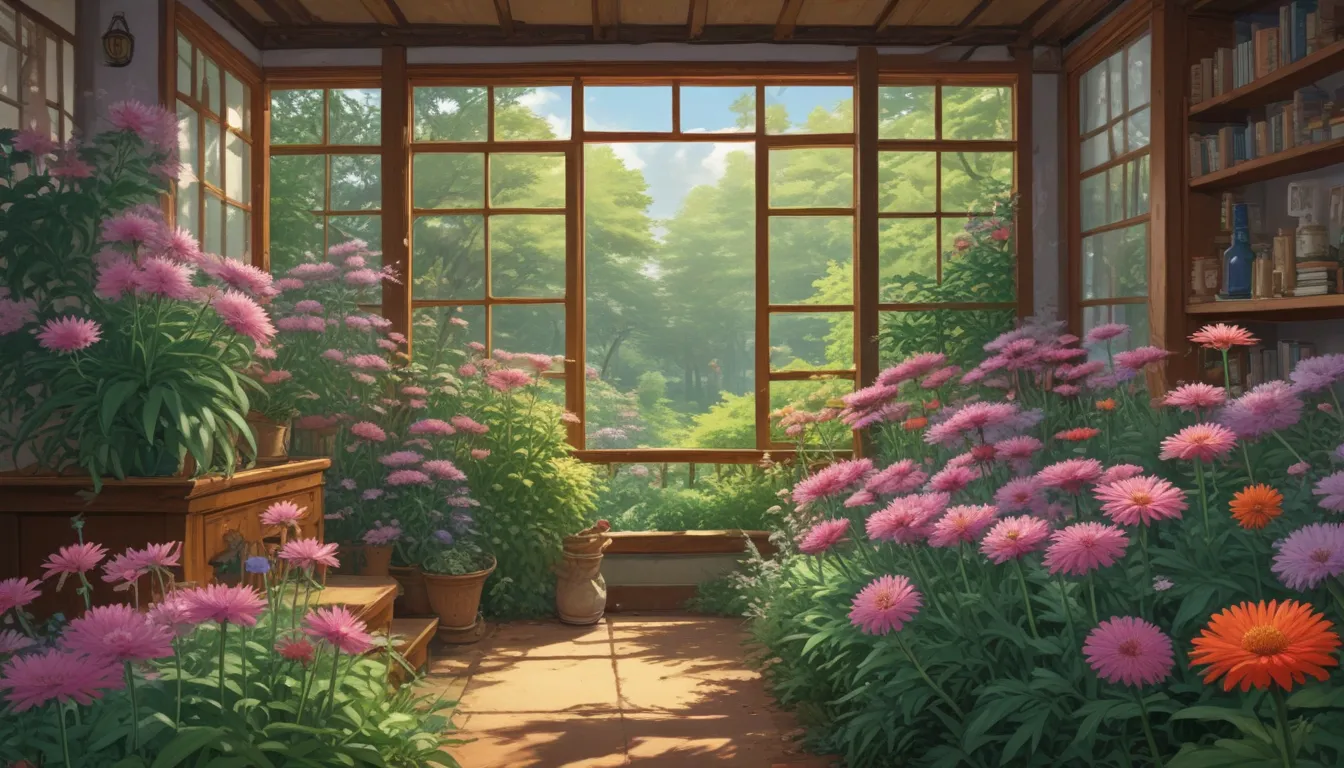The Ultimate Guide to Growing and Caring for Asters

Asters are delightful perennial flowers that brighten up the garden towards the end of the growing season. With their colorful sprays of daisy-like blooms in shades of blue, pink, purple, and white, they are a favorite among gardeners.
If you are looking to add asters to your garden, you’ve come to the right place. In this comprehensive guide, we will cover everything you need to know about growing and caring for asters. From reasons why asters may fail to bloom to tips on ensuring optimal flower production, we’ve got you covered.
Understanding Asters: A Gardener’s Best Friend
Asters are suited to USDA Hardiness Zones 4 to 8 and thrive in full sun with slightly acidic, organically rich, well-drained soil. These vigorous plants have a naturalizing tendency, spreading via self-sowing and root expansion. As a result, they can take up a significant amount of garden real estate if left unchecked.
In this guide, we will explore all aspects of growing asters, from common varieties to specific care instructions for optimal blooming.
7 Reasons Why Asters May Fail to Bloom
When it comes to asters, it’s rare for these hardy perennials to disappoint. However, there are instances where they may fail to bloom. Here are seven common reasons why asters may not flower as expected:
- Growth Disruption: Transplanting or dividing asters at the wrong time can cause growth disruption and impact blooming.
- Inadequate Sunlight: Asters prefer full sun and may fail to bloom if grown in deep shade.
- Moisture Stress: Insufficient or excessive watering can hinder flower production in asters.
- Overcrowding: Overcrowded asters may exhibit poor blooming and increased susceptibility to diseases.
- Overfertilization: Excessive nitrogen in fertilizers can lead to lush foliage and few flowers in asters.
- Pests and Disease: Pests like aphids and diseases like powdery mildew can affect flower production in asters.
- Pinching too Late: Pinching back stems too late can delay blooming in asters.
By addressing these factors, you can ensure that your asters bloom abundantly and beautifully in your garden.
Tips for Optimal Flower Production
To support optimal flower production in your asters, follow these tips:
- Timing is Key: Disrupt plants early in spring, provide full sun, and water appropriately.
- Manage Overcrowding: Divide asters every few years to improve airflow and flowering.
- Watch Your Fertilizer: Use low-nitrogen fertilizers or avoid fertilizer altogether for native plants.
- Stay Vigilant: Keep an eye out for pests and diseases, treating them promptly to avoid bloom failure.
- Prune Wisely: If you pinch stems for compact growth, do so in late spring to early summer for best results.
By implementing these practices, you can ensure that your asters burst into masses of blooms as summer transitions to fall, creating a stunning display in your garden.
Cultivating Asters: A Gardener’s Delight
Whether you are a seasoned gardener or just starting, growing asters can be a rewarding experience. These charming flowers provide a burst of color towards the end of the growing season, enhancing the beauty of any garden.
Do you grow asters in your garden? Share your thoughts and experiences in the comments below. We’d love to hear from you!
For more information on growing and caring for asters, check out these helpful guides:
- 5 Tips for Growing Asters in Containers
- How to Propagate Asters
- 21 Tips for Managing Perennial Asters in the Garden
With the practical advice provided in this guide, you can enjoy a thriving aster garden that blooms abundantly year after year.
Remember, with the right care and attention, asters will reward you with a stunning floral display that will brighten up your garden and bring joy to your heart. Happy gardening!





